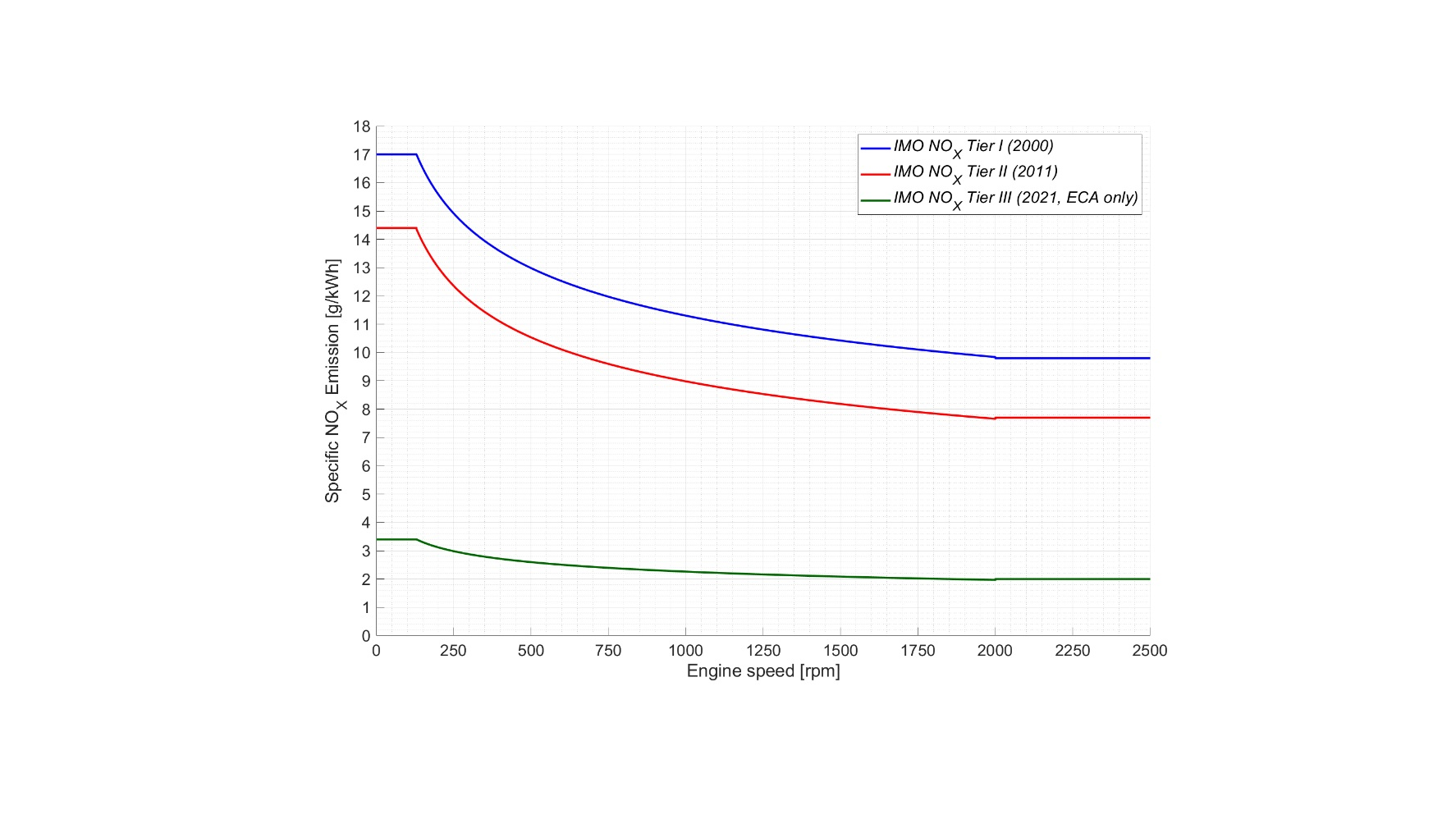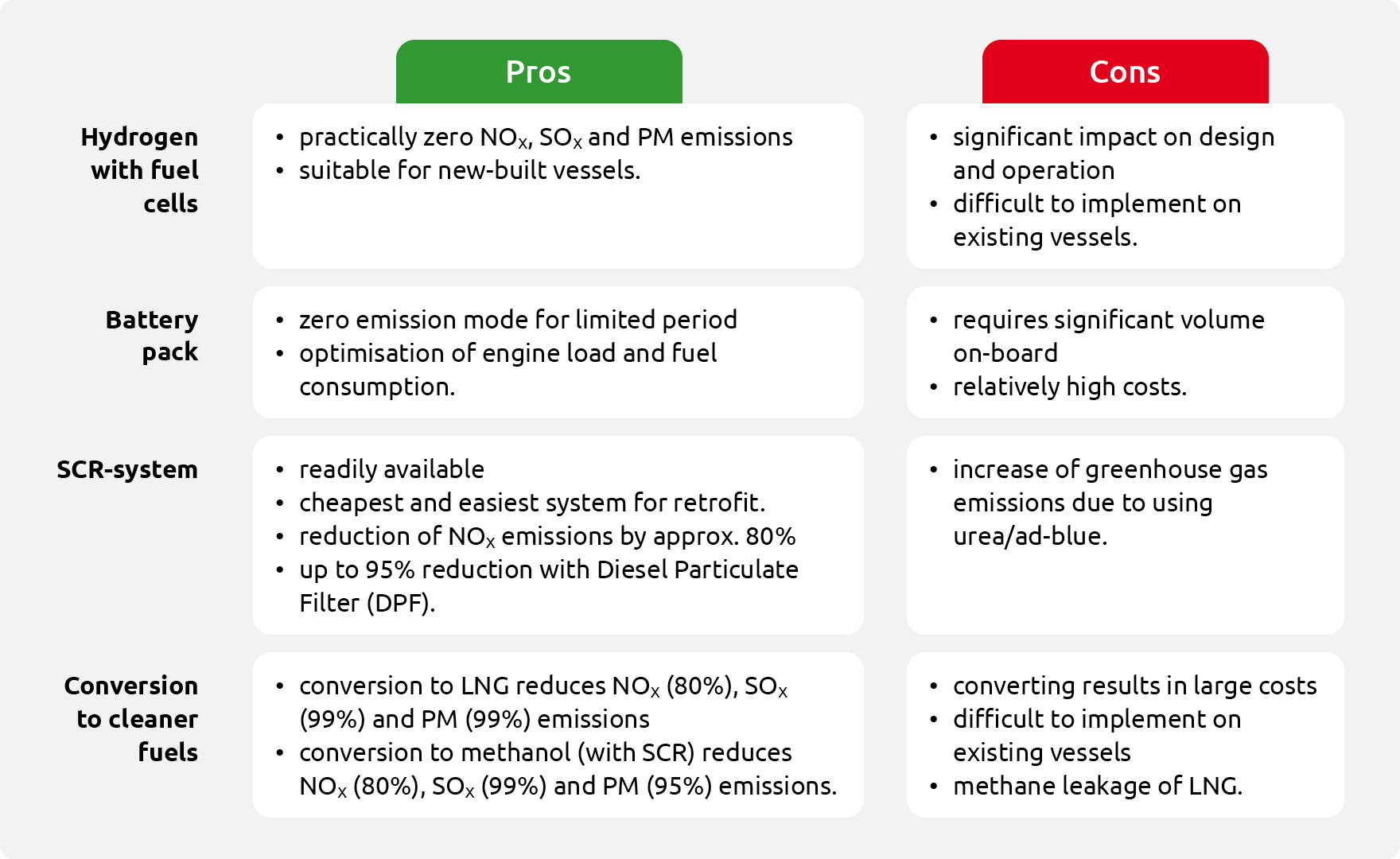Methods to reduce nitrogen-based emissions of dredging operations

Reducing nitrogen-based emissions such as nitrogen oxides (NOX) and ammonia (NH3) is an increasingly urgent issue in the Netherlands. This affects the maritime industry, including the dredging industry. Most of today's vessels are powered by diesel engines, which emit NOX as a by-product of the combustion process. Due to local limitations on nitrogen-based emissions in protected areas, diesel-powered dredgers may be limited in their work. Reducing nitrogen-based emissions can ensure the viability of dredgers for future projects.
Meeting requirements
The NOX emission limit for the maritime sector is currently determined based on the vessel's keel-laying date. For vessels with a keel-laying date of January 1st 2021 or later, the stricter IMO NOX Tier III limit is of application in the North Sea Emission Control Area (ECA). Almost the entire current fleet is older than this, thus significant NOX emissions are still emitted by these vessels. The maritime industry as a whole therefore faces a significant challenge in meeting the environmental requirements for construction and dredging works in the future.

Solutions that are already technically applicable
At Royal IHC, we are committed to developing sustainable and efficient solutions for work vessels. Focus areas include the reduction of greenhouse gas emissions, and the reduction of other harmful emissions such as nitrogen oxides, sulphur oxides (SOX) and particulate matter (PM). The Royal IHC Technology team has now developed several solutions for the challenge of reducing NOX emissions. Each solution has pros and cons as can be seen in Table 1, and the suitability of each solution depends on, among others, the vessel’s size, age and operational profile.
Our solutions are:
- Hydrogen with fuel cells for a zero emission vessel
A hydrogen-fuelled vessel with a fuel cell system is the most sustainable solution and produces practically zero NOX, SOX and PM emissions. This solution is most suitable for new-build vessels as hydrogen (storage) has a significant impact on the design and operation of a vessel. The lower volumetric energy density of stored hydrogen results in a reduced vessel autonomy and makes it difficult to implement on existing vessels. Hydrogen is thus a suitable solution for specific cases with short autonomies (of up to one week).
- A (limited) zero emission mode with battery systems
A battery pack may be applied on the vessel to allow a zero emission mode for a limited period. However, this requires a battery pack with a large capacity, resulting in a considerable battery space requirement as all energy has to be supplied by the battery. Battery packs can also be used to cope with load fluctuations and operate as a spinning reserve. This enables the optimisation of the engines, so they can operate at the lowest possible rate of fuel consumption.
- Selective catalytic reduction system in combination with diesel particulate filter
Installing a Selective Catalytic Reduction (SCR) system will reduce NOX emissions by approximately 80% up to the IMO NOX Tier III limit (and possibly beyond this limit). This system may also be combined with a Diesel Particulate Filter (DPF) to reduce the PM emissions of diesel engines by approximately 95%. This is a cost effective option (in the short term) to reduce harmful emissions and is readily available. However, the additional use of urea/ad-blue results in an increase of the greenhouse gas emissions of the vessel.
- Conversion to alternative cleaner fuels
Using liquefied natural gas (LNG) reduces NOX, SOX and PM emissions by 80%, 99% and 99% respectively, without requiring an exhaust gas after treatment system. Another solution is the conversion from diesel to methanol in combination with a SCR system, achieving a NOX, SOX and PM emission reduction of 80%, 99% and 95% respectively. Engines operating on methanol are expected to be available within the next 2-3 years. Converting an existing vessel to operate on these fuels is possible, but results in large costs due to the need for e.g. double walled piping, ventilation systems, additional cofferdams, additional equipment and engine conversion. We therefore see the methanol and LNG options to be most viable for new build vessels.

The most suitable solution
The selection of the most suitable solution depends on many factors and there is no single solution for all vessels. Whether you are looking for the solution with the largest reduction of nitrogen-based emissions or the most efficient and cost effective solution for your fleet, let’s explore the technical possibilities together. Our aim is to find the most suitable solution for each specific case. Interested in collaborating with us in this field? We look forward to getting in contact with you.
Written by
Benny Mestemaker
Senior Specialist Research New Fuels & Drive systems

Want to learn more about our solutions to reduce emissions?
Fill out the form and one of our experts will contact you.


